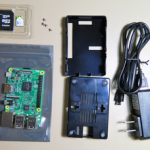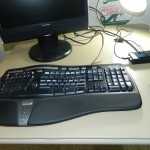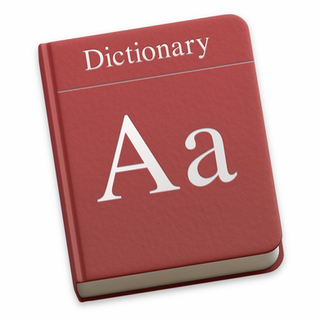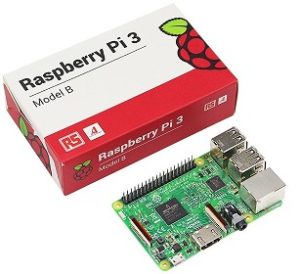 “What?? Tom’s giving away Raspberry Pie? Cool!! I’ll take… wait a minute, bub – that doesn’t look anything like pie to me!!“
“What?? Tom’s giving away Raspberry Pie? Cool!! I’ll take… wait a minute, bub – that doesn’t look anything like pie to me!!“
Yes, I don’t think eating a circuit board will taste anything like pie – raspberry or otherwise; and I think your stomach would not appreciate you sending chewed up electronics down to it!!
No, what I’m talking about is the Raspberry Pi (not Pie!). “Never heard of it before”… I agree, up till recently I wouldn’t have known a Raspberry Pi from an apple pie!!
What’s a Raspberry Pi?
A Raspberry Pi is actually a ‘complete‘ computer on a single small board! Which is amazing in itself – if you remember back to my blog posting ‘The Bygone Days of Exciting Tech‘, I had as my first computer in the ’70’s, a Commodore PET – a 30 pound steel enclosed monstrosity with a built-in keyboard, tape drive and B/W monitor; it contained a whopping 8K (8000 characters) of memory! Well, this little Raspberry Pi computer is – I would guess – at least 1000x or more powerful than that PET and much smaller!! Now that’s progress!!
Anyway, I digress… So again, exactly what is a Raspberry Pi? It’s a small and affordable computer that was initially designed to help folks learn programming; but even more importantly (in my case, anyway) you can use it to build all kinds of computer projects! We’ll discuss those ‘projects‘ in a little bit.
I am going to talk about the version of Raspberry Pi that I have – Version 3 Model B. Note, however, that a newer version, the B+, was just recently released. This version has even better specs. But since I have the B model, that is the one I will concentrate on. Google ‘Raspberry Pi Version 3 Model B+‘ to see the specs on the newer version.
Although small (a single board approximately the size of a credit card!) it is packed with quite a bit of power… So for us ‘Egg-Heads‘ out there (or anyone else interested) here are the specs of the Raspberry Pi 3 Model B:
- Quad Core 1.2GHz Broadcom BCM2837 64bit CPU
- 1GB RAM
- BCM43438 wireless LAN and Bluetooth Low Energy (BLE) on board
- 100 Base Ethernet
- 40-pin extended GPIO
- 4 USB 2 ports
- 4 Pole stereo output and composite video port
- Full size HDMI
- CSI camera port for connecting a Raspberry Pi camera
- DSI display port for connecting a Raspberry Pi touchscreen display
- Micro SD port for loading your operating system and storing data
- Upgraded switched Micro USB power source up to 2.5A
Now that’s pretty impressive for a tiny little board! Not only is the Raspberry Pi small and pretty powerful, it is CHEAP! I got my Pi (the Model 3 Version B) for just $39.95! And even the newest version – the B+ – is still just $39.95
 Accessories
Accessories
Like the Transformers, the Pi is really ‘more than meets the eye’, in that it comes with various accessories you can purchase – although some are more like necessities, since it’s really hard to do anything with just a circuit board. Some of the accessories you can get for the Raspberry Pi include: a case; USB power supply; SD memory card; small fan for cooling; additional circuit boards for the ‘header’ unit; and of course a keyboard, mouse and monitor.
History
So how did this little guy come to being? Well, it started out in the United Kingdom (Britain) in 2012 by the Raspberry Pi Foundation as a method to teach basic computer science in schools and developing countries. However, it turns out that these devices became much more popular than was initially anticipated; soon after the initial release, a community was formed and thousands of “tech heads” bought one and began creating new projects with it – things like: robotics, file servers, retro game machines, controllers, etc. By March 2018 over 19 million units had been sold!
The first Raspberry Pi was released on February 29, 2012. Since then, there have been several generations of the boards released – the latest one is the Raspberry Pi 3 Model B+ on March 14, 2018. They all run the Raspbian Operating System (a light weight version of a system called Linux), but are capable of running other versions of Linux and even other operating systems!
Why Raspberry Pi?
I am sure you are asking by now, “Why did they name it Raspberry Pi?“. Well, to quote Ebin Upton, the founder of Raspberry:
“Raspberry is a reference to a fruit naming tradition in the old days of microcomputers. A lot of computer companies were named after fruit. There’s Tangerine Computer Systems, Apricot Computers, and the old British company Acorn, which is a family of fruit. Pi is because originally we were going to produce a computer that could only really run Python. So the Pi in there is for Python…”
So now you know! And they say blogs are not that informational…
 OK Sounds Cool… But What Can One Actually Do With It?
OK Sounds Cool… But What Can One Actually Do With It?
Now that is the question of the day!
There has been a lot of projects developed on the Raspberry Pi. So just to give you an idea (and start those brain juices flowing) here are a few of those projects that one could tackle with the Pi:
- Your own Web Server
- Your own home-made Media Center
- A do-it-yourself NAS storage Device
- Your own Router
- Retro Arcade Machine
- A network printer controller
- Music player
- A ‘Pi’ tablet
And much more!
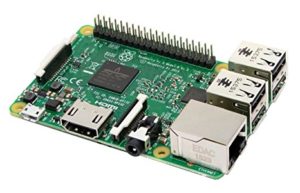 My Experience With the Pi
My Experience With the Pi
So I went out and got a Raspberry Pi 3 Model B at – of all places – Target! In fact, here in our town that was the only place I knew locally to get it… of course Amazon is the next logical place (if one is interested).
As I mentioned, it’s somewhat useless the way it is – you have to hook it up to a monitor, keyboard, and mouse before you can even turn it on! Luckily I had a old spare monitor, keyboard and mouse laying around… But if you really want to use and configure it, you’ll need a few of the other accessories: Case, USB power supply, and a micro SD flash memory card to store the OS and data for the Pi. So, for me, it was back to Amazon to get these few items (less than $25).
A couple of days later my accessories arrived. I installed the Raspberry Pi circuit board into the case (which was no small feat for a guy with Parkinson’s Disease – those screws are really tiny!) and hooked it up to my monitor/keyboard/mouse. I then plugged in the power adapter, turned it on, and… nothing. Oops, I forgot one important thing: Remember that SD flash memory card I got? Yep, I had take that over to my regular desktop computer and install/copy the operating system for the Pi – called Raspbian OS.
That didn’t take very long; then it was back to the Pi, and, after inserting the memory card into the slot in the bottom of the Pi board, I held my breath as turned the unit back on… Success! Pictures of raspberries appeared on the screen, and then the Raspbian OS logo came up! Woo Hoo!! As doctor Frankenstein said “It’s alive!! It’s ALIVE!!!“
Once I got to the main screen, I began to play around with the unit. It seemed familiar – that’s because Raspbian OS is just a special version of Linux (Debian I believe) built for the Pi. I know a few of the basic commands and structure of Linux so it wasn’t too difficult for me to navigate around. Once I got it connected to our WiFi network, I was able to use the the Pi to browse the internet, read email, etc.
Now, don’t get to thinking you can use this little guy the way it is as a full desktop/laptop computer – It’s not really built for that. With only 1GB of memory onboard, and a CPU that is fast but nothing like a full-sized desktop, you – like me – will find internet browsing and such pretty slow. “So what use is it then? ” you say? Well that’s where these ‘other projects‘ come to bear.
My Test Projects
So I began to try some different setups with my Pi – the first being a ‘retro‘ gaming machine! Being from the era of Atari 2600 consoles and Pac Man, I wanted to see if I could use the Pi as a retro game emulator. Sure enough, there was already a special version of the Pi OS system called ‘RetroPie‘ that can be installed – this provides a ton of different game ‘emulators‘ that can run all those old style games! I spent a day or so playing around with that, using various emulators and some public domain, ‘free‘ games.
Important Note: You might ask, “OK that sounds pretty cool… So where do you get these games from?” Well, there are a number of public domain games that run in the various emulators in RetroPie. Now if you want the more commonly known games… the basic disclaimer I have to give is: “Due to the nature/complexity of Copyright/Intellectual Property Rights Law, which differs significantly from Country to Country, ROMs cannot be provided with RetroPie and must be provided by the user. You should only have ROMs of games that you own or purchase.” I DO NOT condone nor support the use of illegally obtained game ROMs – How you get yours is up to you.
I then wanted to try out a couple of other ideas; so I grabbed an old spare memory card – along with a large external USB hard drive – and set up the Pi as a file server (this is basically a machine that allows you to store and share your files – document, pictures and the like – throughout your home network). Now, before one can do this, one really needs to know something about Linux (or have nearby a geek who knows). Being a geek (i.e. Egg Head) myself, I was able to get this installed in less than an hour. And sure enough, once I got it going and hooked up to our home network/Wi-Fi, that little $39 board was able to share files on our home network just like a real server would! And if that didn’t seem cool enough, I found there were pre-built versions of some of the popular NAS systems (Network Attached Storage – or in layman’s terms, a big disk drive on your Wi-Fi network where you can store things like backups or files you want to share with other people/phones/tablets at home) . For instance there is a version of a system called OpenMediaVault – a popular free NAS that is easy to use and administer – built for the Pi. Just load it, configure it, and away you go!
These projects are just the tip of the iceberg in terms of what one can do with this little guy – there are instructions out there there on all sorts of things: Using it as a home automation controller; controlling weather equipment; your own personal web server; a media server that could dish out your movies, pictures, etc. to any connected device in your house; a small ‘portable‘ computer you can take just about anywhere; and the list goes on. It really is only limited by your imagination – and your ‘geekiness‘!
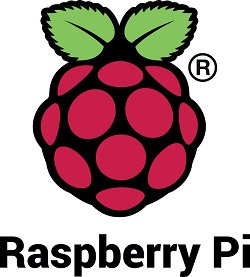 So There You Have It – The Raspberry Pi!
So There You Have It – The Raspberry Pi!
And that, folks, is a quick introduction to the Raspberry Pi! Even though the Pi is small in stature, it’s a very versatile little computer. And because it uses small and lightweight applications, it can be as functional as some of it’s full-size big brothers. Plus it’s so small, you can take it with you and/or set it up somewhere and no one usually even notices it’s there. Finally, being so inexpensive, it’s easy on the old wallet!
As I mentioned in my previous post ‘The Bygone Days of Exciting Tech‘, I had lost that ‘Tech Fever‘ quite a while ago due to tech being everywhere these days, the internet, and nothing really new or exciting happening in the computer world… Well, this little Raspberry Pi may – just may – have brought back some of those old feelings of exciting new technology that I experienced back in the ’80s and ’90s!
So if you like tinkering around with these types of things, try out a piece of Raspberry Pi… And join us on the “Tech Fever” bandwagon!
Note: I’ll be back to Parkinson’s topics for the next blog post, so stay tuned!!
![]()

